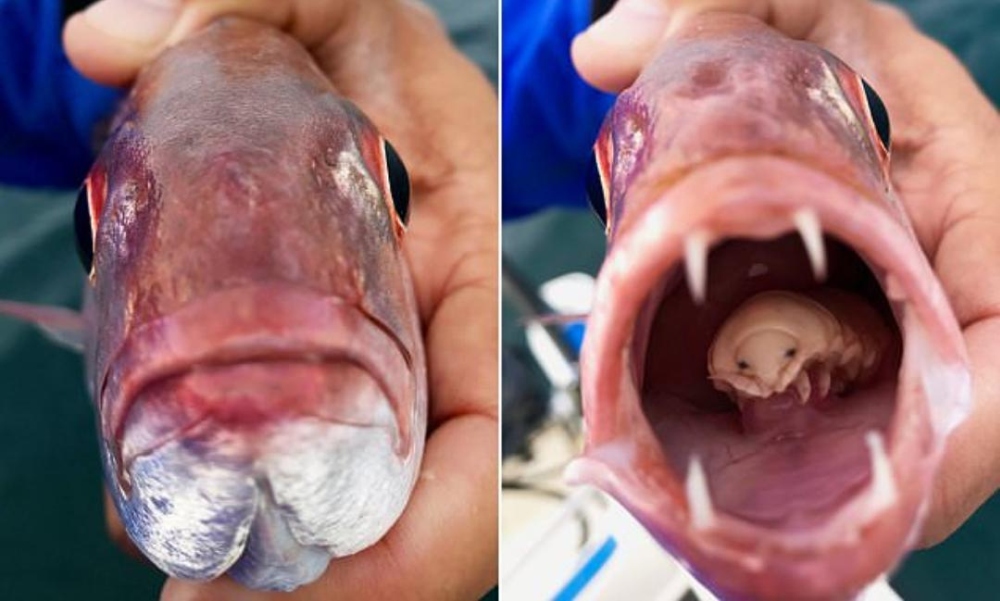This dreadful isopod parasite inhabits the mouths of fishes. According to sources, these creatures take the place of the fish tongues and feed on their blood.
This tongue-eating parasite could be the most grotesque marine animal we have ever featured at natureistic.me. We’ve also written about creepy animals like the Atlantic wolffish and the sarcastic fringehead, but this parasite is way creepier.
This creepy tongue-feeding animal is scientifically known as Cymothoa exigua. It’s a creature from the isopod family, which includes other animals like crabs and shrimps. Isopods are well known as creatures that live most of their lifespan inside various fish mouths. According to researchers, these creatures replace fish’s tongues with themselves after removing them. To date, Cymothoa exigua is the only parasite that can completely replace a complete body organ of its host organism.
Male animals of the species typically only develop to half the size of their females. The female animals can expand to around an inch (2,5 cm) in length. However, there is a twist. Every Cymothoa exigua begins life as a male. After settling within a host and going through their growth phase, they change sexes and become females. However, this only occurs if a female hasn’t already occupied the fish’s mouth.
The louse enters the fish’s body through its gills to begin its parasitic voyage. According to experts, most fish parasites enter the fish’s body through its gills. Upon successfully entering the host’s body, the louse ascends to the bottom of its tongue. It gets ready for an extended stay there. Using its powerful legs, the louse first attaches itself to the fish’s mouth by clamping onto the tongue. Eventually, the louse pierces the fish’s tongue. This is where things get worse for the fish as the louse cuts off the tongue’s blood supply. The fish’s tongue begins to atrophy and finally falls off. This leaves the fish with nothing but a stump. Next, the parasite implants itself instead of the damaged organ, relying on blood and mucus. And working as the fish’s replacement tongue.
The fish does not die soon since the parasite needs fish to live long for their existence. In reality, although looking somewhat scary, the fish may use the louse as an organic tongue prosthesis that can carry out all the tasks and functions that an actual tongue can. Therefore, despite a sizable isopod in its mouth, the fish can still have a relatively everyday existence.
And as if that weren’t bizarre enough, it gets many strangers.
Remember that when juvenile Cymothoas move in, they change into females. If a fish has already been claimed, they remain within and mature into male fish. The male enters the female’s mouth and mates with her once the female and male mature into a fully adult louse. Yikes.
The female gives birth to a brand-new generation of lice after a brief gestation time, continuing this terrifying cycle.
What the louse does when its host dies is not well understood. It might give up on living with the fish, but it also might start to separate from it and look for a new place to live. We do, however, know that snappers are the tongue-eating louse’s main prey, but it has also been seen in other fish species.
We have good news if you’re wondering whether these parasites harm humans. Except for the possibility of biting your finger if you try to contact the Cymothoa exigua, it does not pose a significant threat to people.
